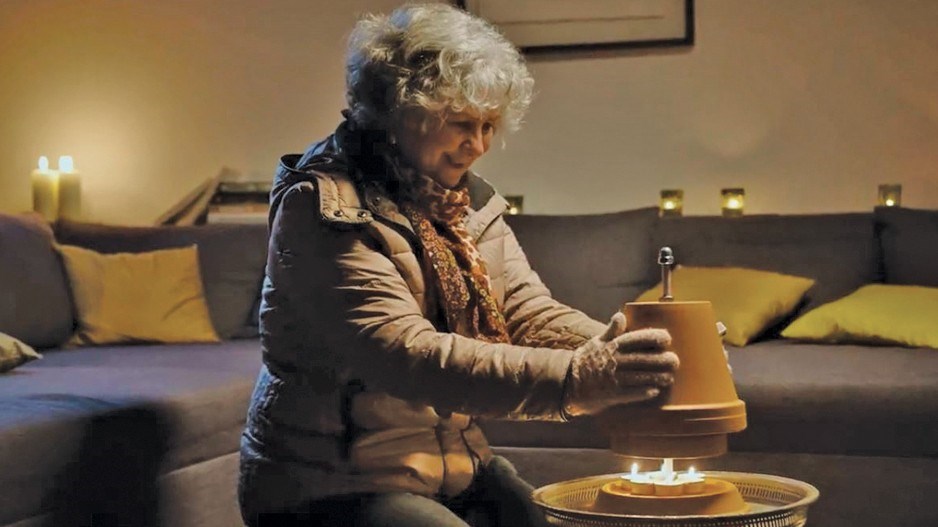When world leaders convene COP26 United Nations Climate Change Conference in Glasgow, Scotland, later this month to lay out their countries’ climate change policy commitments, it will be against the backdrop of a German government ad featuring an elderly woman bundled up against the cold and trying to warm herself and her home with candles.
The video gives German citizens tips on staying warm this winter in the event of a “total failure” of heat or electricity.
Another backdrop for the COP26 conference is what the International Energy Agency (IEA) says is likely to be the second highest annual spike in global greenhouse gas emissions in history in 2021, thanks to all the coal and natural gas that Europe and China have been burning, as a result a rebounding economy, too many windless days idling wind turbines and too many shuttered nuclear power plants.
While German and British leaders can claim some well-earned bragging rights at COP26 for the significant emissions reductions they have achieved over the past decade resulting from investments in renewable energy, they may be forced to admit it has come at a cost to their citizens and their economies.
“Germany and the United Kingdom are talking about and teaching people how to deal with blackouts,” Tim Egan, president of the Canadian Gas Association, said at a recent webinar hosted by the Canada West Foundation. “Do you really think there isn’t going to be significant public uproar about that?”
Just as economies were rebounding from a pandemic, they have been hit by energy shortages and unaffordable energy prices. Energy poverty for lower-income citizens in some parts of Europe is a real concern.
In brief, the road to Energiewende, though paved with good intentions, appears to have some hairpin turns in it that caused a pileup. While some leaders may put on a brave face and call the energy crisis a “hiccup,” the current one may be just a foreshadowing of more to come.
“Are we going to get through this?” Bud Locklear, principal at Earnscliffe Strategy Group, asked rhetorically during the recent webinar. “Is this going to be the only winter that we’re going to have to deal with this? No.”
While the current energy crisis was triggered by a “perfect storm” of factors, some experts believe more episodes like the energy crisis of 2021 can be expected periodically as the world lurches towards an energy transition.
“When you talk about transition, you imply it’s time for a radical change, and that change is being dictated by public authorities who, frankly, aren’t very well informed on energy systems,” Egan said. “And the consequence of that is … rash policy decisions that have profoundly negative effects on people.”
The U.K. banned fracking and failed to maintain adequate natural gas storage. It is now scrambling to import enough natural gas to get its citizens through the winter and paying exorbitant prices.
That U.K., Germany and California have invested most heavily in wind and solar power and now have some of the highest electricity prices and the least energy security, which suggests the problem is the inherent unreliability of renewables, particularly wind.
But that’s only half the equation. In Germany, the problem has been that, while it invested hundreds of billions in wind and solar, it also began retiring nuclear power plants, forcing it to burn more coal and gas.
“The proximate cause of all these crises has been surging natural gas prices as the world recovers from the COVID-19 pandemic,” Ted Nordhaus, director of the Breakthrough Institute, recently wrote in Foreign Policy magazine. “But the underlying problem is that despite huge bets on renewable energy over the last several decades, California, Britain, and Germany have chosen fossil fuels over carbon-free nuclear energy to backstop their electrical systems.”
The problem is not renewables per se. The world will need a lot more renewable energy if countries are to hit the net-zero targets they have been pledging to meet by 2050, according to the IEA’s World Energy Outlook 2021.
“Today’s pledges cover less than 20% of the gap in emissions reductions that needs to be closed by 2030 to keep a 1.5°C path within reach,” the IEA warns.
Eventually, wind and solar may be able to supply significant amounts of power, but building out the transmission and storage needed to make them firm and reliable could take decades. In the interim, large amounts of natural gas and LNG will likely be needed for backup power.




